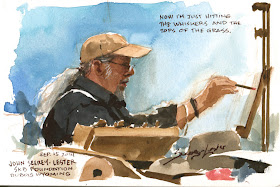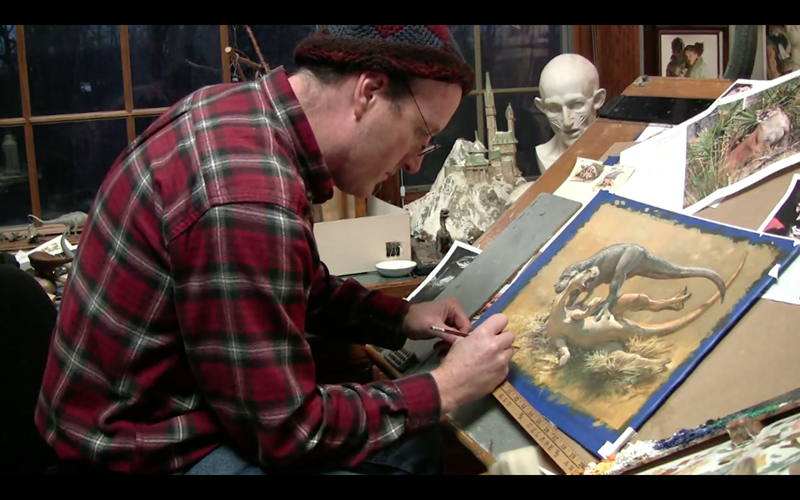
Richard Scott's new book, "
Sketching - from Square One to Trafalgar Square
" is a comprehensive introduction to drawing from observation.

The book presents practical advice for achieving accuracy, including measuring angles and organizing value shapes. One tip is that you can size up an appropriate cone of vision by holding your arms out at the width of your shoulders in front of you.
Scott includes a variety of excellent examples of sketch techniques, including pen and ink, marker, pencil, and wash drawing, all in black and white.

He discusses not only linear perspective, but also the simplification of a subject into tonal shapes, with fresh ideas that will appeal to painters, too. He acknowledges not only objective features of the scene, but also subjective aspects of visual perception, such as how certain edges go in and out of focus when you squint.

Scott's background is in architectural rendering, so he approaches subjects from the built environment with particular authority.
Although his approach is clear and analytical, it's not just technical. He has an artist's eye throughout. One of the inspiring qualities of the book is the focus on conveying feeling, and the emphasis on digging into why a subject appeals to you in the first place and how to play up that emotional quality.

The book lays out useful methods that anyone can use to see better, think better, and draw better. The result is a practical drawing manual that is a worthy successor of classic sketching books by Betty Edwards and Arthur Guptill, one that will improve the drawing skills of the beginner and master sketcher alike.
-----
Details: 192 pages, 8" x 10" (horizontal format), softcover (with covers that are a bit too thin, unfortunately). The book is organized into three parts, with 10 chapters and 419 illustrations. It is priced at $29.95.-----
Available on Amazon:
Sketching - from Square One to Trafalgar Square
Official website:
Sketching from Square One






































